Floating mats of dark green leaves and bright yellow flowers is a common sight in most irrigation canals and waterways around our rice fields. For the most part, these mats are comprised of creeping waterprimrose (Ludwigia peploides) and Uruguay waterprimrose (Ludwigia hexapetala), which are prolific throughout the Central Valley. However, there is another Ludwigia species that is encroaching into rice fields, and this one has the potential to cause severe problems for rice seed and production fields: winged water primrose (Ludwigia decurrens).
Ludwigia decurrens (Winged Water Primrose)
Alternate names: Upright primrose, wingleaf primrose-willow, primrose-willow, winged waterprimrose, winged primrose willow
Winged water primrose (Ludwigia decurrens, WWP) was first identified in Butte County rice fields in late 2011. After the initial identification of WWP in Butte County, it was determined by UCCE Farm Advisors and the Butte County Agricultural Commissioner that the distribution extends over several square miles, with most infestations along rice field borders and irrigation and drainage canals.
Seed capsules from this plant have thousands of seeds which are capable of floating on the water surface as a means of dispersal, especially along irrigation canals. It is believed that this has been the main means of dispersal across the majority of the infested area. Other potential means of spread are by tillage equipment and combines. Additionally, it has been determined that plant fragments have the ability to grow roots within a day or two when in water. This suggests that mowing of levees as a means of control may potentially increase dispersal of this weed.
Cass Mutters (UCCE, retired) performed testing in the greenhouse at the Rice Experiment Station that indicated that the plant germinates best when the soil is moist but not flooded. However, the seed can germinate under water and eventually grow above the water surface with the potential to survive in a rice field and set seed. This plant also has the ability to form roots that grow upwards through the water column in order to scavenge oxygen near the water surface.
In early 2016, the California Department of Food and Agriculture Division of Plant Health reclassified WWP from a "Q" (uncertain status) rated pest to an "A" (detrimental to agriculture) rated weed pest and a "P" (prohibited) rated seed pest. These ratings have the potential to impact certified rice fields and the movement of seeds as well as the export of rice to other countries. Given the seriousness and potential economic and/or environmental detriment WWP poses, the Butte County Agricultural Commissioner's Office alongside University of California Cooperative Extension, California Cooperative Rice Research Foundation, Butte County Rice Growers Association, and USDA-ARS, have joined forces to help map, manage, and control the current distribution of WWP with the goal of stopping the spread and reducing infestations of the pest.
Identification
WWP is not the only Ludwigia species we see alongside rice fields and ditches. Creeping waterprimrose (Ludwigia peploides) and Uruguay waterprimrose (Ludwigia hexapetala) are prolific throughout the Central Valley and are common in waterways and wetland margins. All three Ludwigia species share common characteristics: all have yellow flowers, floating stems, and the capacity to reproduce through seed and plant fragments. However, WWP has some distinguishing characteristics that can help identify it.
4-petaled flowers
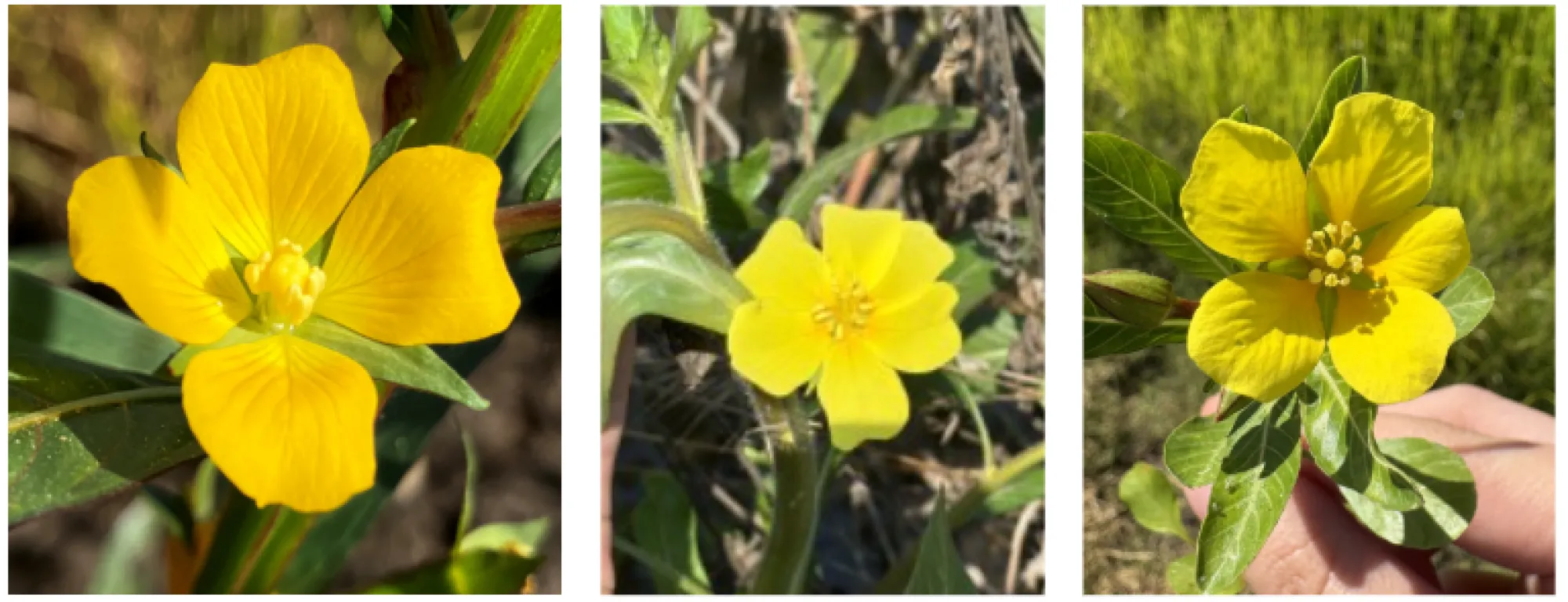
From left to right: Winged waterprimrose (WWP) has 4 yellow petals and 4 sepals. Uruguay waterprimrose has 5 to 6 petals. Creeping waterprimrose has 5 petals, with slightly smaller petals.
"Winged" Stem
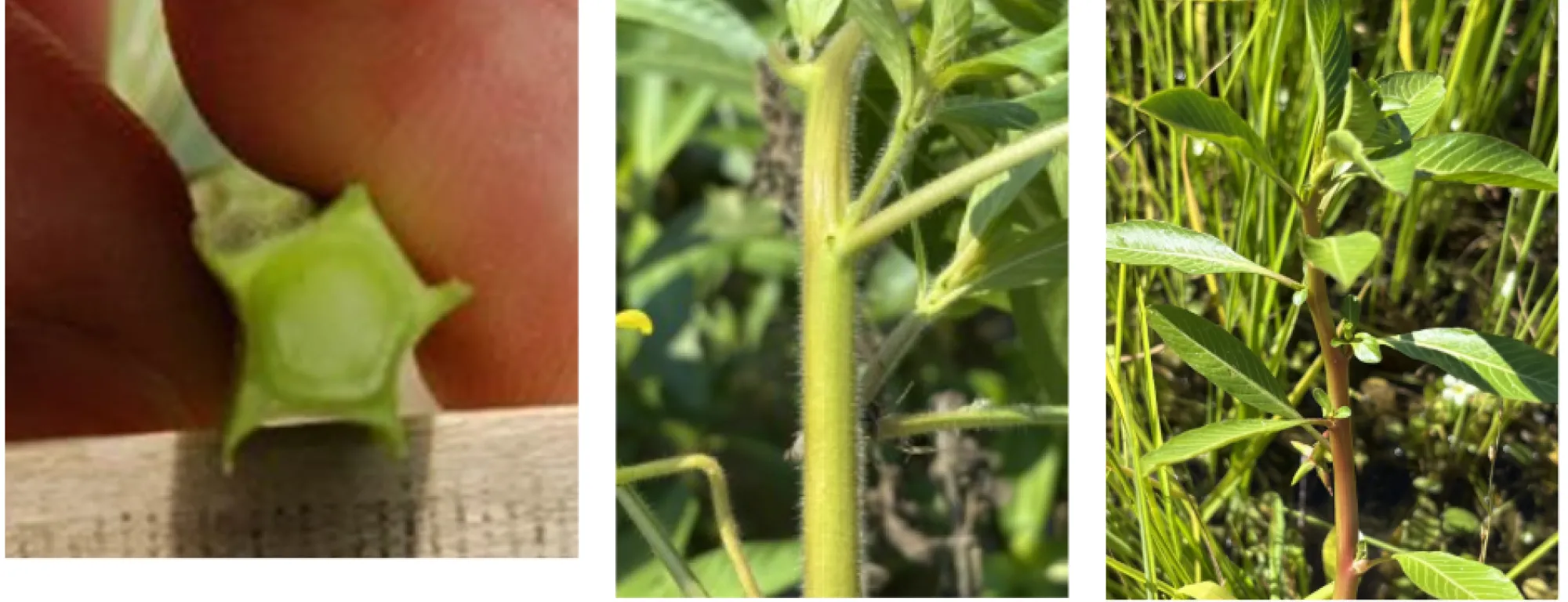
From left to right: WWP has a winged stem in a star-like cross-section (pictured). Uruguay primrose has a hairy, round stem, with more hair than other primroses. Creeping waterprimrose has a smooth, round stem and rounded leaves.
Control and Current Research
The Butte County Agricultural Commissioner recommends hand-roguing WWP plants, as formed seed capsules will have viable seeds that will likely germinate the next season if those plants are not removed from the field and buried in a landfill. Mowing is not recommended, as the plant fragments can grow new roots in a matter of days, which may actually increase population sizes.
UC IPM Pest Management Guidelines for Rice suggest that maintaining a strong, competitive rice crop, coupled with triclopyr (Grandstand) is a way to keep this weed in check in conventionally grown rice fields. Fischer & Eckert, UC Davis (2011) performed greenhouse screens of WWP treated with commonly used foliar and granular herbicides (see below). Their research demonstrated that at the time of the study, Grandstand was the only foliar product with effective control. With regards to the water-activated products, clomazone (Cerano), thiobencarb (Bolero), penoxsulam (Granite GR), carfentrazone (Shark H2O), and halosulfuron-methyl (Sandea) showed effective control of WWP.
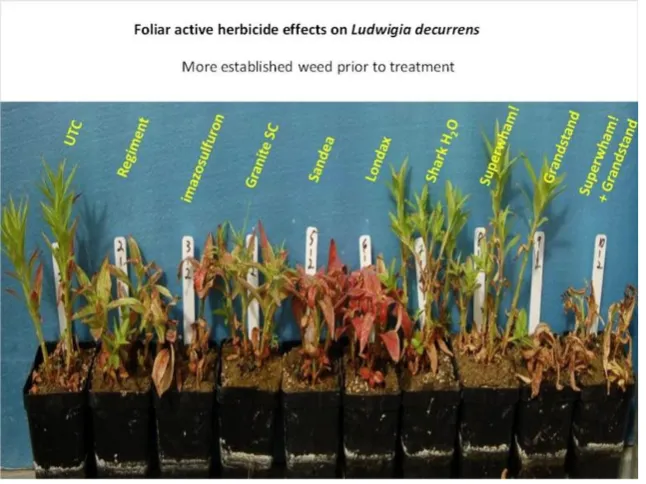
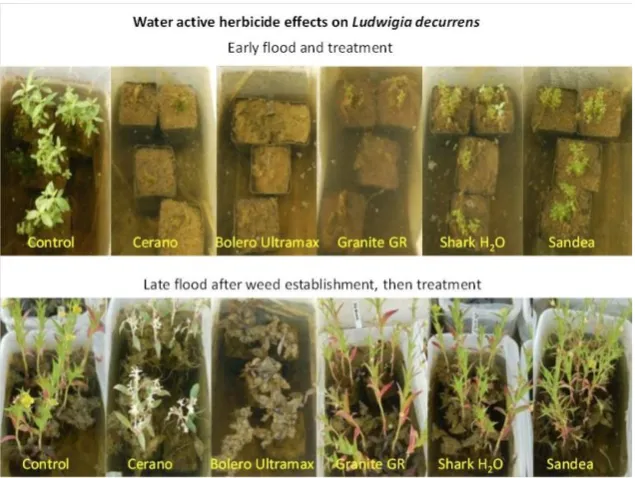
The effects of commonly used rice herbicides on WWP. Top is foliar herbicides, bottom is water-active herbicides.
However, there has not been much guidance on eliminating this weed other than hand-roguing. Currently, the Butte County Agricultural Commissioner's Office alongside University of California Cooperative Extension, California Cooperative Rice Research Foundation, Butte County Rice Growers Association, and USDA-ARS are collaborating with efforts to evaluate chemical control options of WWP in both rice fields and irrigation waterways. This partnership is also surveying sites that have had populations of WWP in recent history to evaluate population densities of this weed.
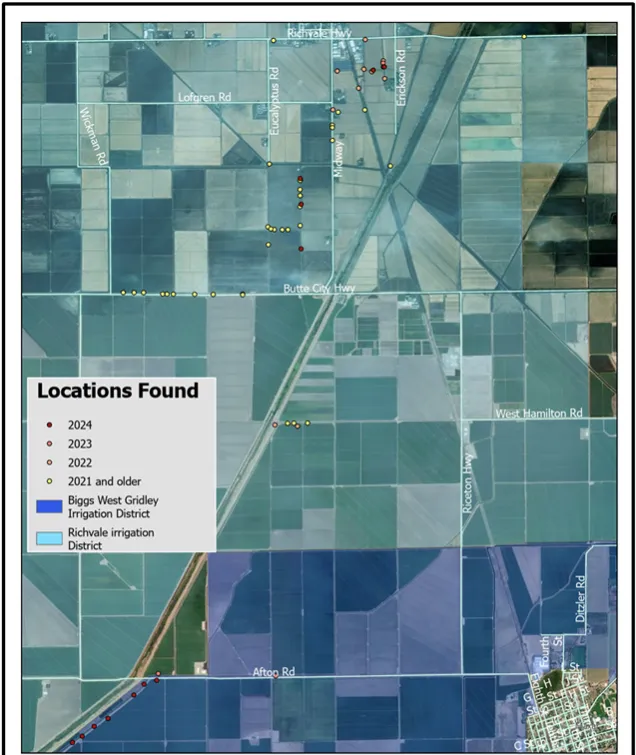
Map of confirmed WWP sightings in Butte County, CA.

